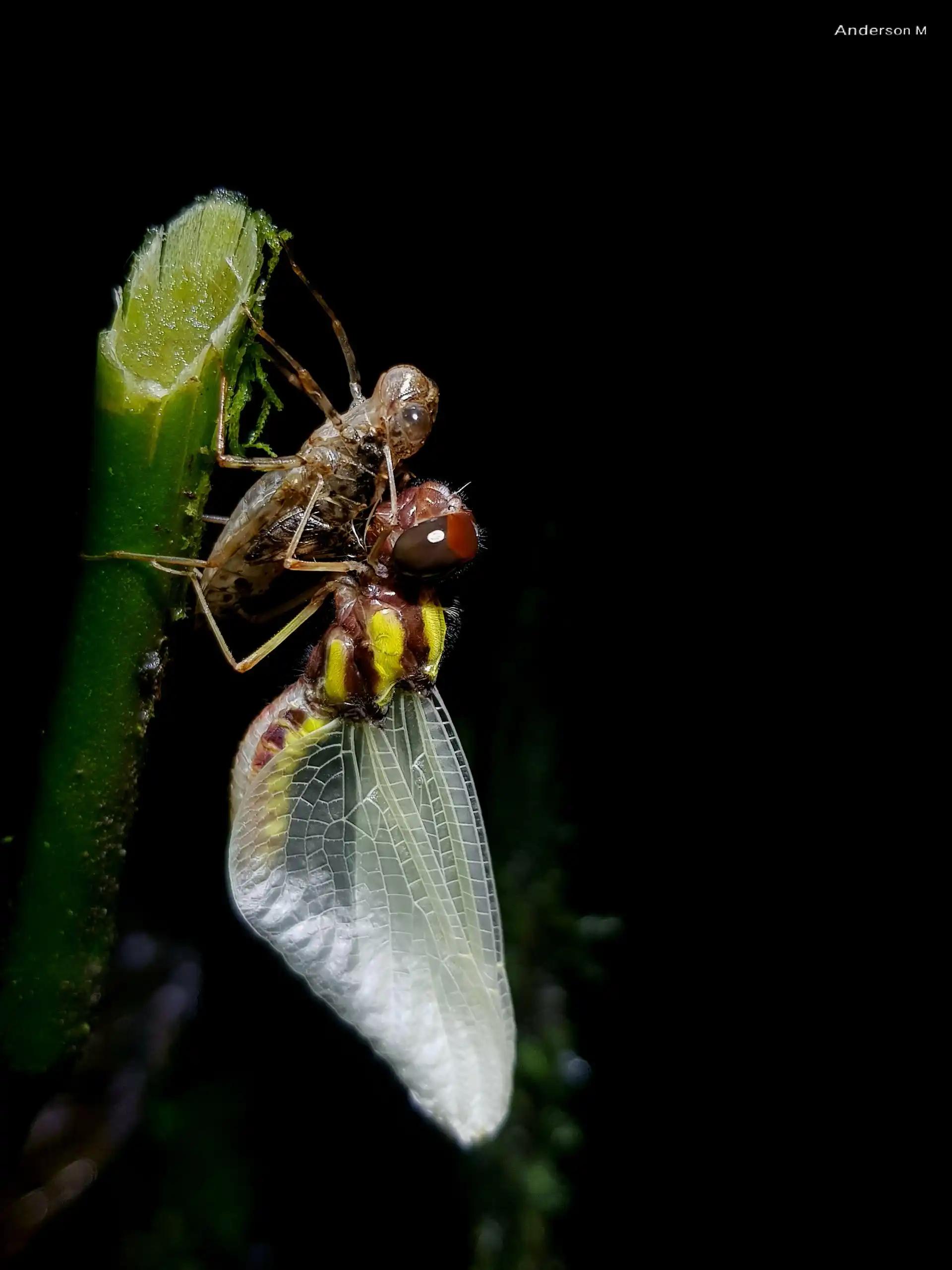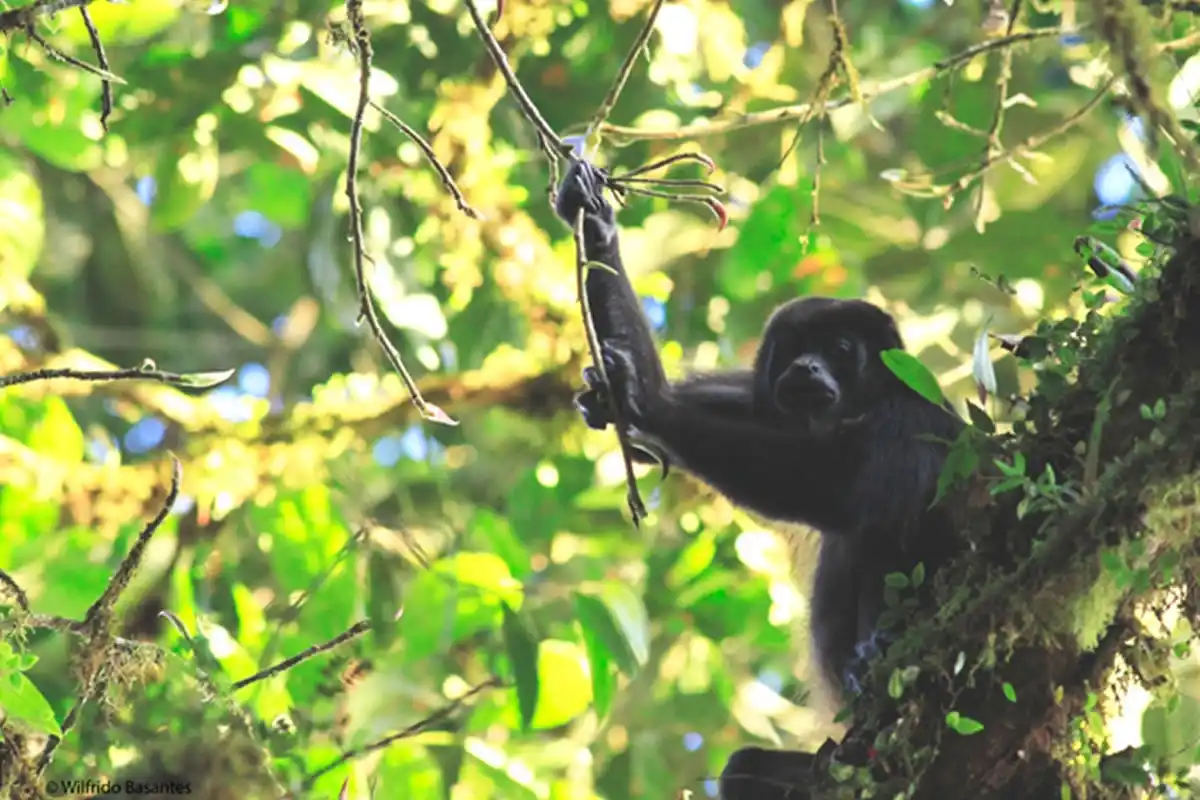New members of the Mashpi family!
By: Wilfrido Basantes
A few days ago when we found ourselves at the entrance gate to the reserve, we spotted a mother Chotacabras colilira (Uropsalis lyra) with her young. One interesting characteristic of these birds is that they do not build nests and lay their eggs directly on the ground. The mother cares for them by placing herself on top of them.
In this way, the mother not only keeps them warm, she also protects them with her camouflage that looks like a rock. To the begin with, the little chicks are shaped and coloured like a ball of cotton, but when they grow they acquire colouring like their mother. Because they don’t make nests, local people call them the lazy bird.
When the nymph became a dragon
By: Anderson Medina
On one of our night walks, a memorable experience shared among the Mashpi family, we came across a beautiful dragonfly that had recently transitioned to the adult state. This pivotal moment marks the end of its nymph phase, unveiling the wings of an adult for all of us to admire.
The Mashpi family learned that an adult dragonfly can thrive for more than a year, a fascinating fact that piqued our collective curiosity. However, the most extended period of this insect’s life is spent in the nymph state, a phase that remains elusive to us. During this time, it is harder to spot since we don’t have the chance to see it underwater in a lake, river, or pond, a mystery that the Mashpi family often contemplates during our explorations.
A nymph looks like a small alien creature. Its wings have not yet grown and on its back a bump appears to hang off. Nymphs live in the water while they grow and develop to become dragonflies.
This part of the cycle can take up to four years to complete and if it is fulfilled at the beginning of the winter it will remain in the water until spring when the climate is warm enough to come out. Once the nymph has totally developed and the climate is just right, metamorphosis in the dragonfly is finalised when it drags itself out of the water on the stalk of a plant.
The skin that the nymph has left behind is called exuviae and can be found stuck to the stalk for a long time after the dragonfly has left. As soon as it has left the exuviae behind, it begins to search for food and a companion to reproduce with.
Dragonflies have some of the most amazing eyes in the animal kingdom, so large that they cover almost all of the head, giving them the appearance of a wearing a helmet. These super developed eyes allow them a complete 360° vision – that is really incredible.

A true vegetarian
By: Wilfrido Basantes
Walking along the Howler Monkey Path, we came across a family of golden-haired howler monkeys (Alouatta palliata), a male and four females, feeding placidly on the leaves of a strangler fig tree. These animals love to rest on the branches of trees. They are very noisy, particularly the males who have an oral sack like a sound box that is made of the prolongation of hyoid bones.





